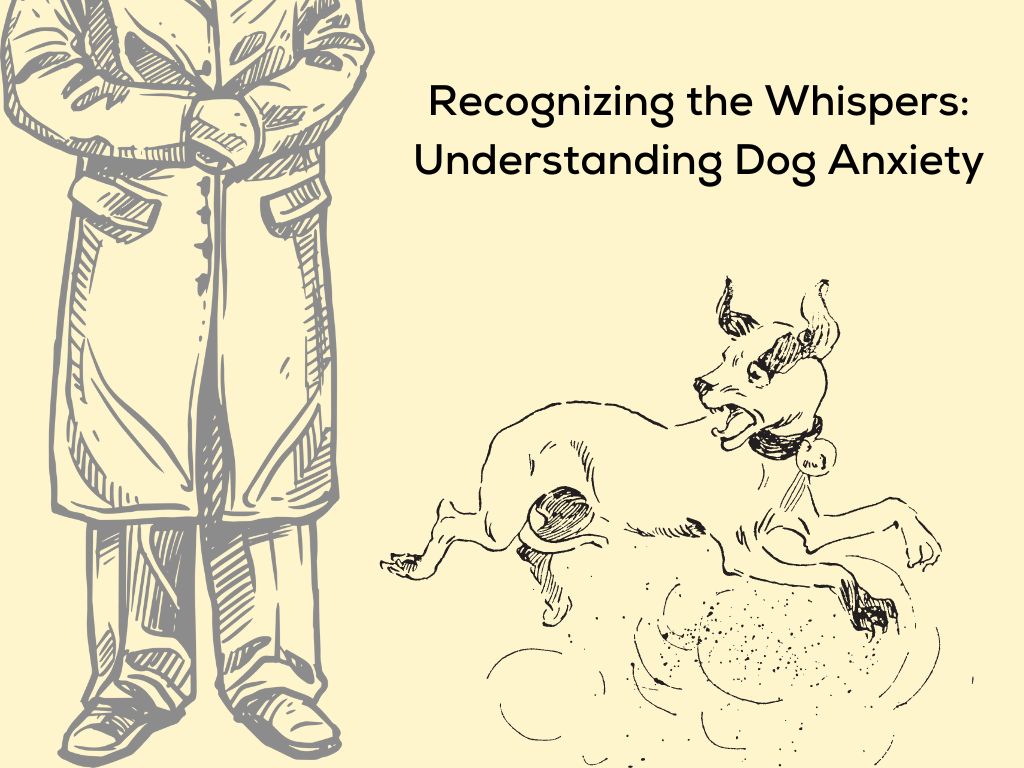Recognizing the Whispers: Understanding Dog Anxiety

Hello, dear dog parents! As we mark Dog Anxiety Awareness Week from May 6th to 12th, it’s a great opportunity to shine a light on an issue close to many of our hearts—dog anxiety. Just like humans, our canine companions can experience anxiety, which can affect their quality of life. Understanding the signs and symptoms of dog anxiety is the first step in helping our furry friends lead happier, more relaxed lives. Let's dive into the key signs of dog anxiety and explore how we can support our beloved pets.
What Is Dog Anxiety?
Dog anxiety can manifest in various forms and can be triggered by numerous factors including separation from owners, loud noises (like fireworks or thunderstorms), changes in environment, or even unfamiliar people or other animals. Recognizing the signs early can help prevent the anxiety from escalating and affecting their well-being.
Key Signs and Symptoms of Dog Anxiety:
Excessive Barking or Howling: If your dog starts barking or howling more than usual, especially when left alone, it might be a sign of separation anxiety.
Pacing or Restlessness: Just like humans, anxious dogs can show signs of restlessness. If you notice your dog pacing frequently, unable to settle, or circling in one area, it could indicate anxiety.
Destructive Behavior: An anxious dog might try to relieve stress by chewing or destroying furniture, digging at carpets, or scratching at doors. This behavior is often noticed when the dog is left alone.
Shivering or Trembling: While dogs might shiver or tremble due to cold, if these behaviors occur in other situations (like during a thunderstorm or in a new environment), they may be anxiety-related.
Excessive Drooling or Licking: Excessive drooling or constant licking, especially of their own body parts, can be a response to nervousness.
Avoidance or Hiding: If your dog suddenly starts to hide under furniture or avoids interaction with humans and other pets, it could be a sign of feeling anxious or threatened.
Changes in Eyes and Ears: Pay attention to their eyes and ears. Wide-eyed or showing the whites of their eyes, and pinning their ears back against their head, are common signs of anxiety in dogs.
Loss of Appetite: Anxiety can lead to a decrease in appetite or changes in eating habits, which can impact their overall health.
How Can We Help?
Create a Safe Space: Provide a comfortable, safe space where your dog can retreat when they feel overwhelmed. This could be a quiet corner with a cozy bed and some of their favorite toys.
Exercise: Regular physical activity can greatly reduce stress and anxiety in dogs. It helps them burn off energy and stimulates their mind.
Training and Socialization: Proper training and socialization at a young age can help prevent anxiety. Consider professional training classes that focus on positive reinforcement.
Consult a Veterinarian: If signs of anxiety persist, consult your veterinarian. They can offer guidance, recommend behaviorists, and in some cases, prescribe medications to help manage anxiety.
Be Patient and Consistent: Patience is key when dealing with an anxious dog. Consistent routines and gentle guidance can help them feel more secure.
During Dog Anxiety Awareness Week, let’s commit to being more observant and empathetic towards our canine friends. By understanding and addressing dog anxiety, we can improve the quality of life for our loyal companions, ensuring they feel as safe and loved as they make us feel every day. Here’s to happier, healthier dogs!